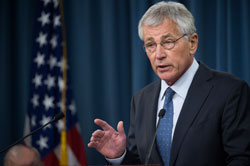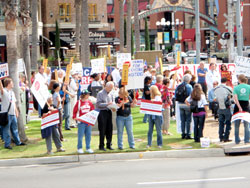As Occupy Wall Street protests enter its fifth week, similarities between the 99 percent movement and the still young Tea Party movement are becoming more visible.
The idea is said to be first attributed to “The Daily Show” host Jon Stewart, recently reiterated by President Barack Obama and Governor Chris Christie.
Michael Phillips-Anderson, a communication professor that focuses on politics at the University, attended Occupy Wall Street in New York with his wife and young daughter. Phillips-Anderson said, “I was very impressed with how peaceful and accommodating everybody was.”
He explained that the protest was well organized and was surrounded by media stations, medical stations, food stations, a library, and a cleanup station. Phillips-Anderson said, “They really set up a whole functioning community there.”
Claude Taylor, also a communication professor specializing in politics at the University, sees similarities between Occupy Wall Street and the Tea Party. He said, “People have turned away from the central structures of authority and power to advocate for themselves. The idea that citizens are the engine for a movement is absolutely similar between the two.”
Arielle Giordano, a senior at the University explained that it’s a far stretch to compare Occupy Wall Street and the Tea Party.
“The Tea Party movement, solely a grass roots movement started by the people, differs far from the Occupy Wall Street movement. The reality is the vast majority of these protesters just need to feel like they are a part of something and have nothing else to do,” Giordano said.
Phillips-Anderson sees some parallels between the Tea Party and Occupy Wall Street, but finds the Tea Party received much more funding and institutional support much earlier.
“There are plenty of Republicans who are sort of far off on the right who found a natural home there,” said Phillips-Anderson. “The Democratic party is not that left or liberal, the Democrats get more donations from Wall Street than Republicans.”
Phillips-Anderson also said the Tea Party got significantly more press coverage right from the start.
“The way issues are framed between the two groups are different. The Tea Party advocates for less government and less taxes. Occupy Wall Street, they say well we don’t know what they want,” said Phillips-Anderson. “It’s pretty obvious we’re talking about economic inequality. We’re talking about the declining share of taxes by the wealthy as their income has risen, and wages have stagnated for everyone else.”
Taylor believes the Tea Party movement has a much more narrow political focus than the Occupy Wall Street movement has right now.
“The ideas being expressed by Occupy Wall Street are a broad range of economic ideas and global economic policies. That makes them different as the Tea Party coalesced around a smaller range of political concerns and electoral concerns, and Occupy Wall Street has a much broader set of concerns,” Taylor said. “Economic despair knows no political boundaries.”
He explained that it’s clear that even when people’s political ideology might seem to be at odds with what they’re hearing on streets, the issues affect people across political lines.
“What’s interesting is, there’s this split of who do we want more to have control, because somebody’s going to have some control,” said Phillips-Anderson. “The Tea Party seems to think that corporations should have it, not the government.” Phillips-Anderson believes that Occupy Wall Street thinks the government should have more control, but they are not entirely trustful of the government because they’ve seen what happens when the government has too much control. “Although, large corporations get a much better deal than individuals do,” Phillips-Anderson said.




